LAX Construction Defect Suit May Run into Statute of Limitations
December 30, 2013 —
CDJ STAFFCurrent arguments over the claims made by LAX that Runway 25L was built in a defective manner by Tutor-Saliba/O&G Industries are hinging over whether the airport knew the runway was defective less than four years after the construction was completed. The runway was built almost five years ago, and Tutor-Saliba is claiming that Los Angeles World Airports has delayed too long in making a construction defect complaint. Tutor-Saliba is not conceding that the runway is defective, only that if it were, the airport would have known it earlier.
Los Angeles World Airports, which operates LAX, is not commenting on the matter, but Robert Span, an aviation attorney at Steinbrecher & Span, told the Daily Breeze that while “there is a four year statute of limitations for dealing with construction defects, but that’s for what they called patent defects,” and that “there’s a 10-year statute of limitations for construction projects where the defect that is alleged is called latent — something that would not be readily apparent.”
Tim Pierce, a construction attorney at K&L Gates LLP described it as “a common defense,” though he said it is “raised in most cases and only works in some.”
Read the court decisionRead the full story...Reprinted courtesy of
Can a Lease Force a Tenant's Insurer to Defend the Landlord?
October 10, 2022 —
Kerianne Kane Luckett - Saxe Doernberger & Vita, P.C.Can an indemnification clause in a commercial lease obligate a tenant’s insurer to defend a landlord? Recently, the United States District Court for the Northern District of New York said, “Yes!” On August 9, 2022, the district court issued a decision in ConMed Corp. vs. Federal Insurance Company, holding that the indemnification clause in a policyholder’s lease triggered the insurer’s duty to defend the landlord in an action arising out of the tenant’s negligence.
Facts of the Case
ConMed is a medical technology company that leases warehouse space in Georgia from Breit Industrial Canyon (“the Landlord”) to sterilize its medical equipment. ConMed’s employees filed suit against ConMed and a contractor that performed the sterilization, alleging injuries caused by exposure to excessive amounts of chemicals used in the sterilization process (the “ConMed Action”). Thereafter, ConMed’s employees filed a separate lawsuit against the Landlord, alleging that the Landlord permitted storage of unsafe levels of the chemicals at the warehouse without adequate ventilation (the “Landlord Action”). The lease agreement required ConMed to indemnify the Landlord “except in the event of, and to the extent of, Landlord’s negligence or willful misconduct.”
Read the court decisionRead the full story...Reprinted courtesy of
Kerianne Kane Luckett, Saxe Doernberger & Vita, P.C.Ms. Luckett may be contacted at
KKane@sdvlaw.com
Pinnacle Controls in Verano
February 21, 2013 —
CDJ STAFFThe California Court of Appeals has applied the California Supreme Court’s recent Pinnacle decision to a new case, Verano Condominium Association v. La Cima Development. As in Pinnacle, La Cima sought to compel arbitration of construction defect claims with a homeowners association. The trial court denied La Cima’s attempt to compel arbitration on the grounds that the arbitration agreement was made with the individual homeowners and not the homeowners association. Further, it was determined that the CC&Rs “were unenforceable due to unconscionability.”
La Cima appealed, and the appeals court affirmed in part and reversed in part. After Pinnacle, La Cima sought a review. The Supreme Court of California directed the appeals court to vacate their earlier decision and reconsider, based on Pinnacle.
The Fourth Circuit Court has concluded that this conflicted with the ruling in Pinnacle. There, as in Verano, homeowners signed agreements that disputes with the developer would be settled through binding arbitration. The appeals court had found for the community association, but on review, the California Supreme Court reversed this decision.
The California Court of Appeals had two issue to consider in this review: whether the arbitration provisions applied to the homeowners association, and whether these provisions were unconscionable. The court concluded that “in light of Pinnacle it is clear the arbitration provisions set forth in the Verano CC&Rs constitute a valid agreement to arbitrate.” On the second question, the Verano CC&Rs were described by the court as “materially indistinguishable” from those in the earlier case. As the state Supreme Court found that those were not unconscionable, clearly neither were these.
The case was remanded for further proceedings and La Cima is entitled to recover the costs of the appeal.
Read the court decisionRead the full story...Reprinted courtesy of
Be Careful When Requiring Fitness for Duty Examinations
October 21, 2015 —
Craig Martin – Construction Contractor AdvisorFitness for Duty examinations can be an important part of an employer’s hiring and retention protocol. The Nebraska Supreme Court recently clarified when an employer may require applicants and employees to undergo fitness for duty examinations. In Arens v. Nebco, Inc., the court ruled that an employer must have a legitimate, nondiscriminatory reason for its demand that a current employee submit to a fitness for duty examination.
In this case, Lenard Arens suffered two significant injuries over the course of his 25 years of employment with Nebco. The second injury, a closed head injury, limited the type of work he could do and required written instructions due to short term memory loss. Arens was assigned to drive tractor-trailer trucks. Several years after returning to work, Arens had two minor accidents with his truck within a matter of days. Arens supervisor required him to undergo fitness for duty examination. Arens failed the fitness for duty examination and was terminated. Arens filed suit, claiming that Nebco discriminated against him by making him take a fitness for duty test.
Read the court decisionRead the full story...Reprinted courtesy of
Craig Martin, Lamson, Dugan and Murray, LLPMr. Martin may be contacted at
cmartin@ldmlaw.com
EPC Contractors Procuring from Foreign Companies need to Reconsider their Contracts
July 18, 2018 —
Hwan Kim – Construction & Infrastructure Law BlogA recent California case may force engineering, procurement and construction companies doing business with foreign suppliers to reconsider—and maybe rewrite—their contracts. In Rockefeller Technology Investments (Asia) VII v. Changzhou SinoType Technology Co., Ltd., the California Court of Appeal held that parties may not contract around the formal service requirements of the Convention on the Service Abroad of Judicial and Extrajudicial Documents, commonly referred to as the Hague Service Convention. The decision could have profound implications for international business.
Read the court decisionRead the full story...Reprinted courtesy of
Hwan Kim, Sheppard, Mullin, Richter & Hampton LLPMr. Kim may be contacted at
hkim@sheppardmullin.com
Not So Unambiguous: California Court of Appeal Finds Coverage for Additional Insured
October 11, 2017 —
Malcom Ranger-Murdock - Saxe Doernberger & Vita, P.C.California’s Fourth District Court of Appeal recently determined that manuscript additional insured endorsements (AIEs), which purportedly provided coverage for ongoing operations only, were ambiguous. The court also found the insurer that issued the policies, American Safety Indemnity Co. (American Safety), acted in bad faith due to its systematic efforts to deny coverage to general contractors as additional insureds.
In Pulte Home Corp. v. American Safety Indemnity Co.,1 Pulte Home Corporation (Pulte Home), a general contractor, sued American Safety for failure to defend Pulte Home as an additional insured in connection with two underlying construction defect lawsuits. American Safety contended that it did not have a duty to defend Pulte Home because the loss occurred after the construction project was complete and the applicable AIEs did not provide coverage for completed operations, and/or because the policy’s faulty workmanship exclusions applied. The trial court awarded $1.4 million in compensatory and punitive damages to Pulte Home, and American Safety appealed.
Read the court decisionRead the full story...Reprinted courtesy of
Malcom Ranger-Murdock, Saxe Doernberger & Vita, P.C.Mr. Ranger-Murdock may be contacted at
mrm@sdvlaw.com
Surplus Lines Carriers Cannot Compel Arbitration in Louisiana
May 29, 2023 —
Tred R. Eyerly - Insurance Law HawaiiThe court denied the surplus lines insurer's motion to compel arbitration based on Lousiana's law prohibiting arbitrations of coverage disputes. Fairway Village Condominiums v. Independent Spec. Ins. Co., 2023 U.S. Dist. LEXIS 62135 (E.D. La. April 20, 2023).
The plaintiff's condominium complex was damaged by Hurricane Ida. A claim was filed with the insurer. The insurer made an initial advance payment of $200,000. Three additional payments were made bringing the total to $951,462.49, which was less than half of the proof of loss amounts submitted by plaintiff.
Plaintiff sued the insurer for breach of contract and bad faith. The insurer filed a motion to compel arbitration based upon an arbitration provision in the policy. Recognizing that Louisiana law prohibited enforcement of a policy's arbitration clause, the insurer argued it did not apply because it was a surplus lines carrier.
Read the court decisionRead the full story...Reprinted courtesy of
Tred R. Eyerly, Damon Key Leong Kupchak HastertMr. Eyerly may be contacted at
te@hawaiilawyer.com
20 Years of BHA at West Coast Casualty's CD Seminar: Chronicling BHA's Innovative Exhibits
May 03, 2018 —
Beverley BevenFlorez-CDJ STAFFThe Bert L. Howe & Associates, Inc., (BHA) exhibit has been a fixture at West Coast Casualty's Construction Defect Seminar since the mid-1990's. Through the years, BHA has updated their display, but no matter what year, you could count on the BHA exhibit to provide a not-to-be-missed experience.
2008-BHA's sleek, rear projection display includes a screen that promotes the firm's capabilities that can be seen throughout the exhibit hall. This would be one of many innovations BHA has brought to the West Coast Casualty seminar.
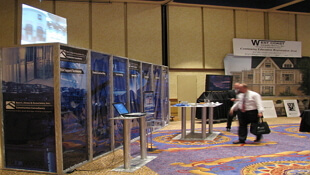
2009-With the success of the rear screen projection, BHA adds additional monitors to provide attendees with more information about BHA.
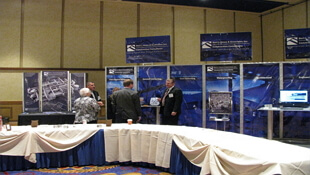
2010-BHA adds an interpretive professional development exhibit targeted to Building Envelope issues allowing adjusters and other non-construction professionals hands on access to the systems and components at the heart of many related such claims.


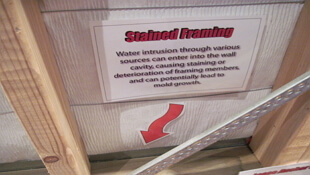
2011-BHA's Swing for Charity challenge is born.

2012-Always innovating, BHA expands its rear projection and professional development offerings to West Coast attendees.

2013-BHA showcases additional capabilities with a twenty-four foot, custom, convex, immersive video experience.

2014-BHA adds an iPhone display to give a hands-on demonstration of their data collection methods.
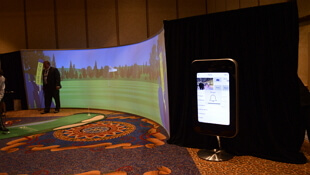
2015-BHA's twenty-four foot , custom, convex, immersive video experience was elevated with two additional rear projection screens, reflecting BHA's newest capabilities and services.

2016-BHA dazzles attendees with their new exhibit comprised of more than 15 integrated, high definition, LCD displays. iPads are stationed on tables to conveniently demonstrate BHA's data collection processes.
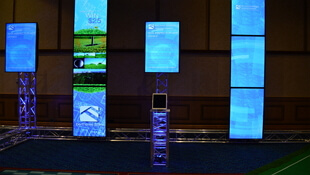
2017-BHA's Swing for Charity Golf Challenge raised $2,225.00 for the National Coalition for Homeless Veterans and $1,900 for Final Salute.
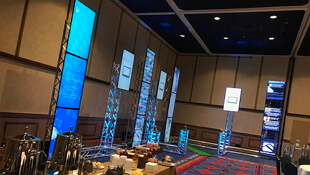
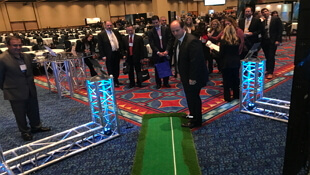
Read the court decisionRead the full story...Reprinted courtesy of




































































